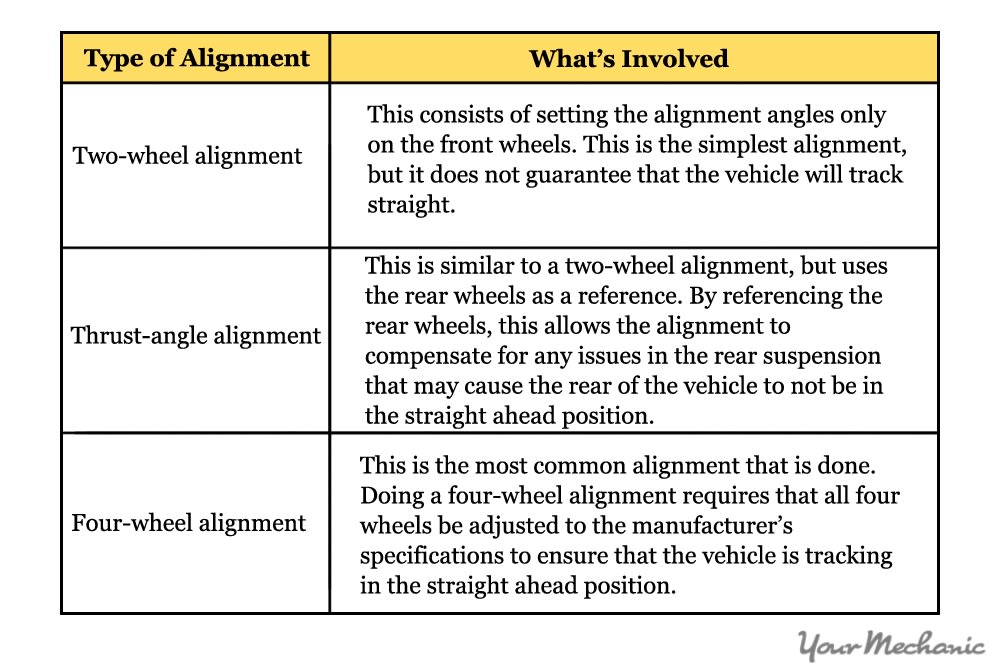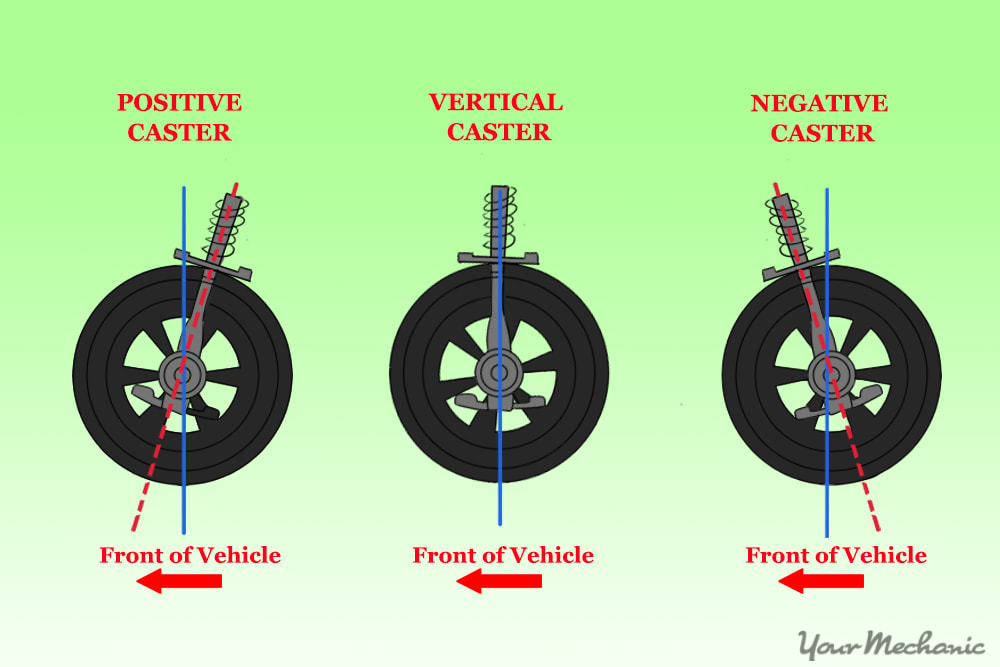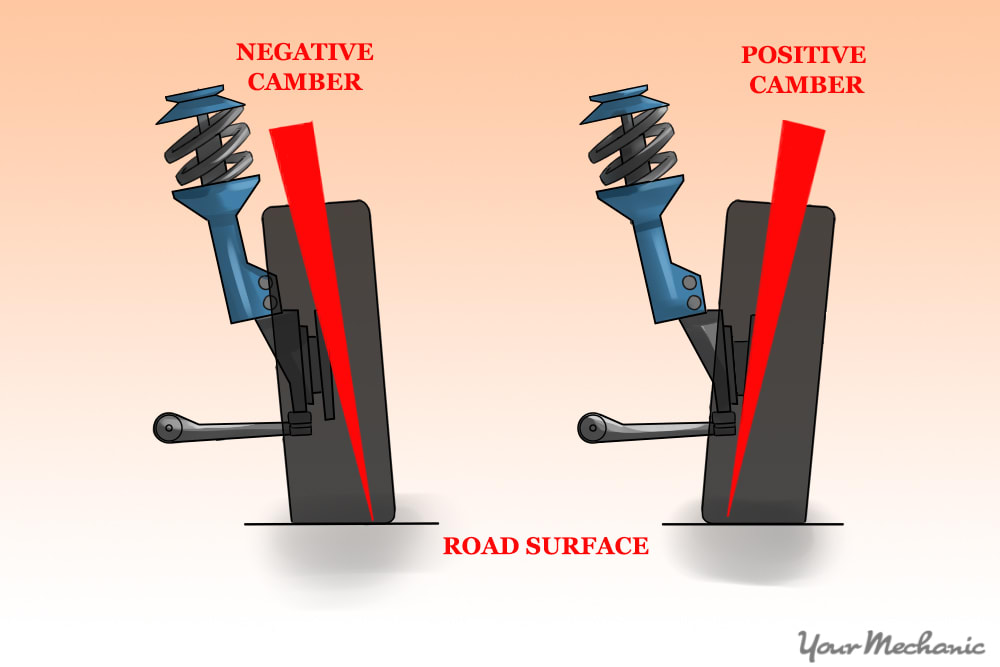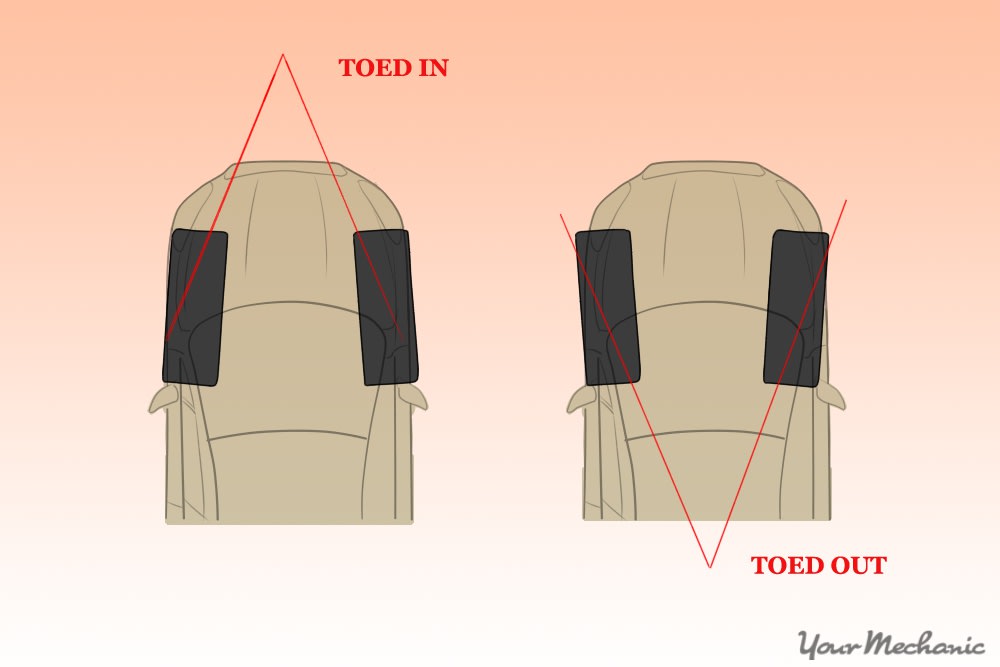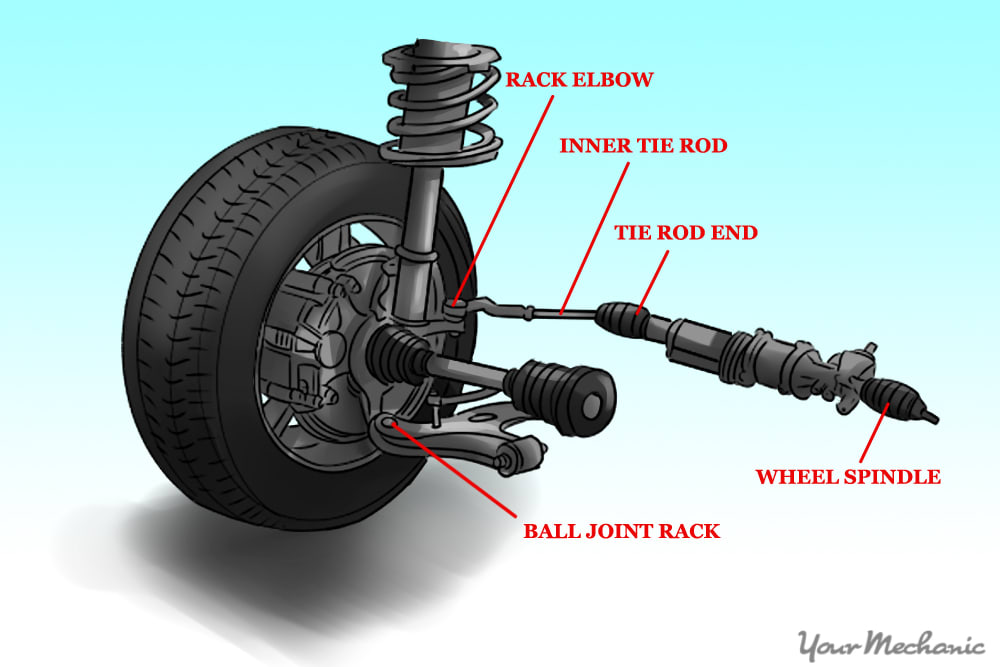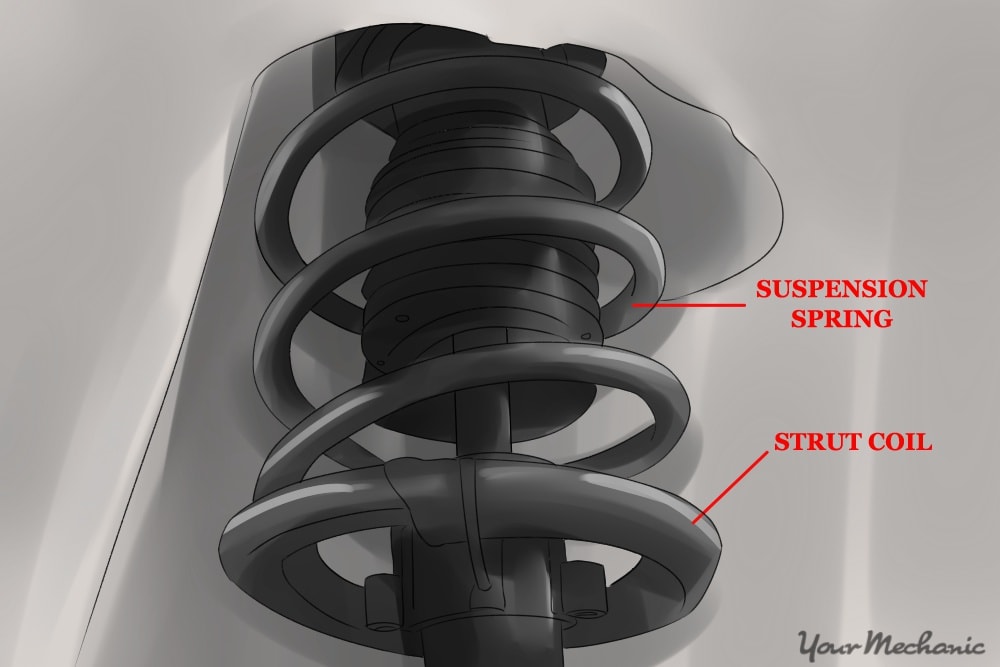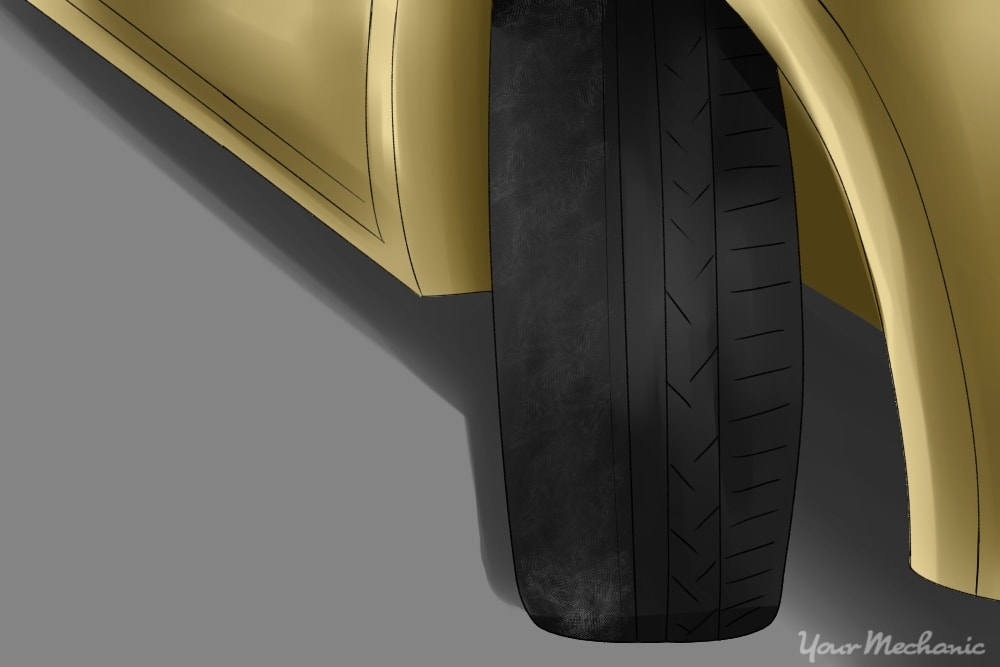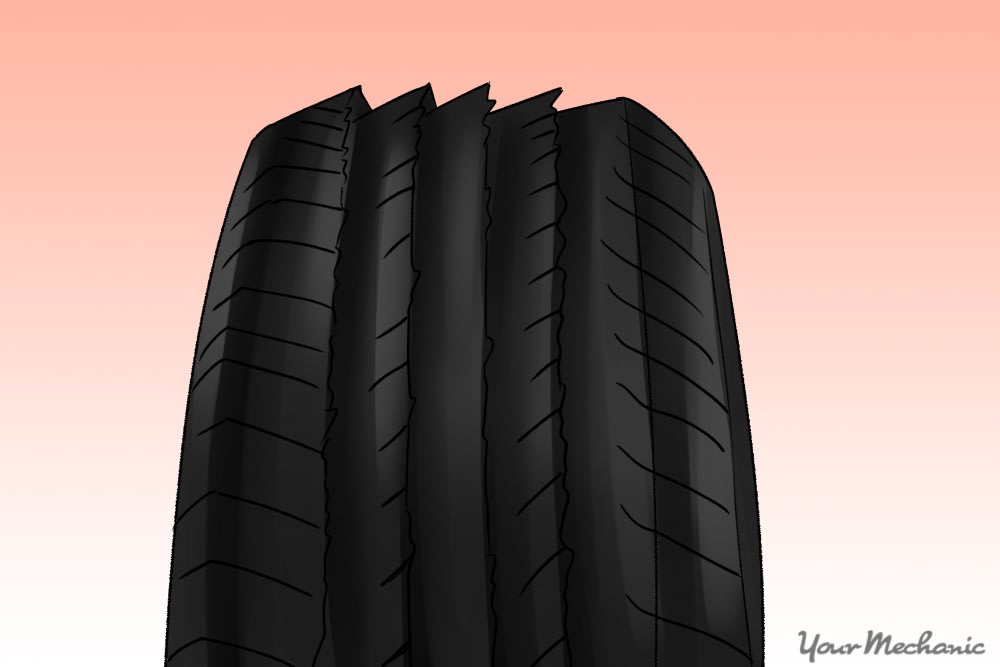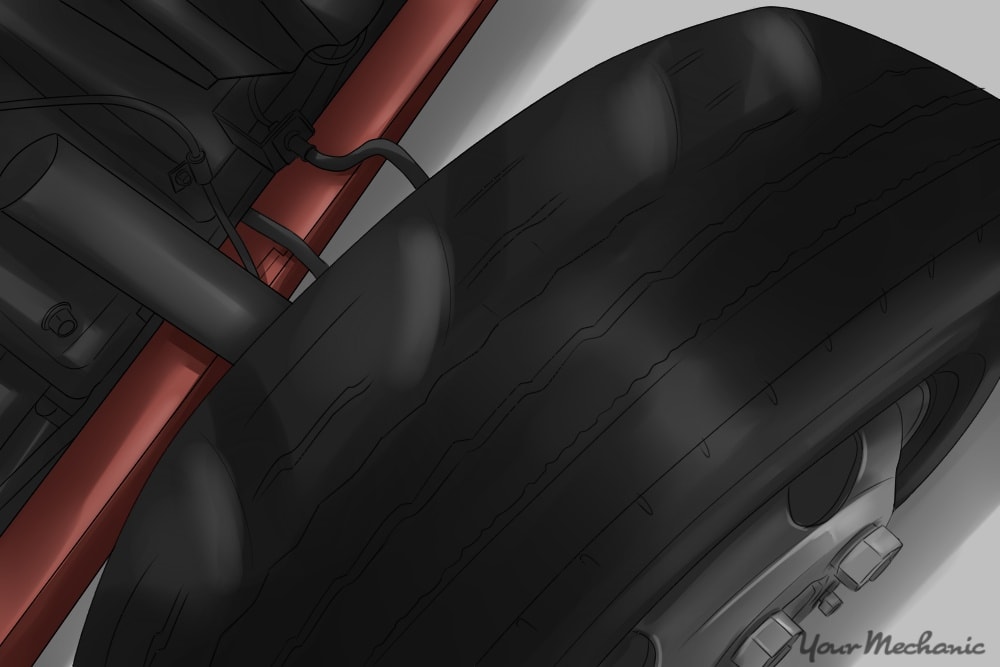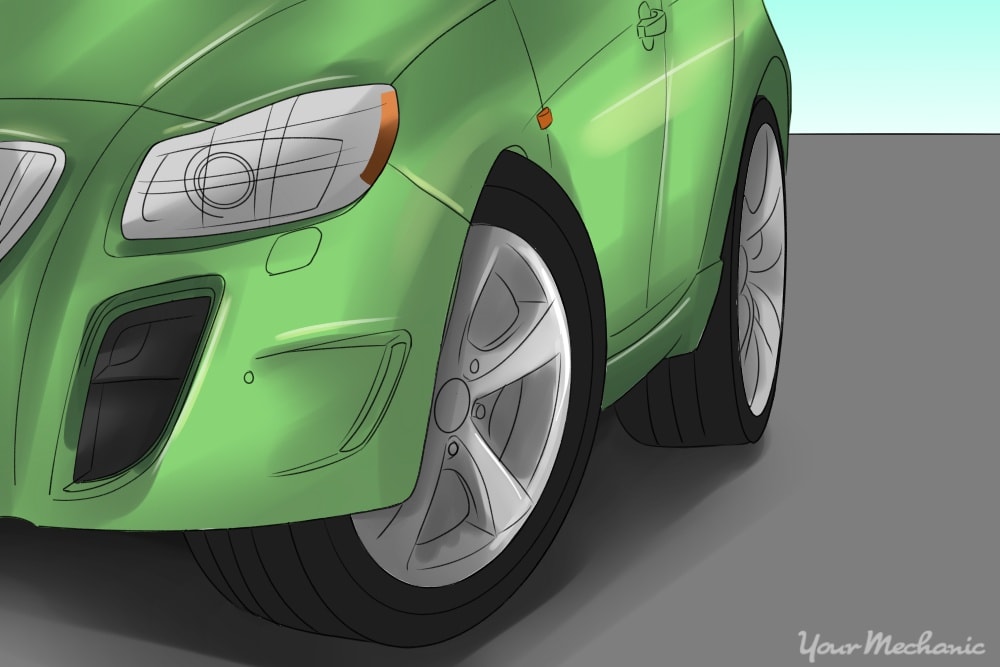

The first time that you may suspect a wheel alignment problem is when you are driving down the road and your car feels like it drifts or pulls to one side. You may notice that the steering wheel is not centered while driving straight down the road. Your car may drive fine, but when you look at your tires you may notice that they are wearing more on one side than on the other. Your alignment can affect your vehicle in many different ways, and understanding the signs of an alignment problem can help you in achieving a more comfortable ride and longer tire life.
Part 1 of 5: Understanding wheel alignments
Though there are not any definite recommended service intervals for a wheel alignment service, it should be checked about once every 6 months. Your vehicle can come out of alignment from hitting imperfections on the road surface or from worn suspension and steering parts. A wheel alignment service can consist of a front wheel, thrust angle, or a four wheel alignment.
The common alignment angles are camber, caster and toe.
- Caster angle: Caster is the angle in which the front suspension is positioned in reference to the vertical position. Caster is only set on the front suspension of your car. This angle cannot be seen by eye, but must be measured with the correct alignment equipment. On most vehicles this angle is set in a positive manner which assists in steering and vehicle stability at higher speeds. This angle does not usually affect tire wear.
- Camber angle: Camber is an angle that is set which you can actually see when looking at some vehicles. Camber is the tilt of the top of the tire according to how it sits on the road. If you are looking at a tire and the top appears to lean towards the engine then that is considered negative camber. If the tire leans away from the vehicle then that is considered positive camber.
This angle is typically set fairly close to straight up and down which would give you zero camber. This angle can be set on the front and the rear of most vehicles. When this is not in specification it will cause the inside edge of the tire (negative camber) or the outside edge of the tire (positive camber) to wear faster than the rest of the tread.
- Toe angle: Toe angle is the most commonly needed alignment adjustment. This angle also causes the fastest tire wear. Toe angle is the straight ahead position of the tires. If you think about walking with the toes on your feet pointed inward, this would be considered toe-in. If your feet are perfectly straight, that would be zero toe. If you pointed your feet outward that would be toe-out. This angle can be set on the front and rear of most vehicles and it typically set fairly close to zero, or straight ahead.
Part 2 of 5: The test drive
The first inspection that should be done is a vehicle test drive. The test drive will verify any concerns with the alignment.
Symptom 1: The vehicle pulls to one side. If the vehicle pulls in one direction when driving then that is an indication that the camber or caster angle is not within specifications. It can also be an indication of a tire problem. A tire that is under-inflated, that is the wrong size, or has an internal belt separation can cause a pull.
- If the vehicle seems to pull in both directions randomly, this can be an indication of loose suspension or steering parts.
Symptom 2: The steering wheel is not straight. A crooked steering wheel is an indication of the toe angle not being within specifications. This can also be caused by worn steering components.
Symptom 3: The vehicle shakes or vibrates. In some cases this can be caused by a caster angle that is not within specifications, but the most common cause of this is worn out suspension parts, tires that are out of balance or warped brake rotors.
Symptom 4: Vehicle noises. If you hear squeaking, creaking, knocking, or rubbing, that typically indicates a steering or suspension problem. Loose or worn out components can cause a series of strange noises underneath the vehicle.
Part 3 of 5: Vehicle pre-inspection
Before an alignment can be done on a vehicle there are several items that need to be checked. If an alignment is performed without doing this inspection, the alignment will change as soon as the vehicle is driven.
Check the tires and wheels. The tires and wheels need to be checked for proper size and fitment. If the tires are not the correct size, or if they do not match, then an alignment service cannot be done. If all of the wheels are not the same then an alignment cannot be performed. If the tires and wheels are matched then the tire pressure should be checked and adjusted to meet the manufacturer’s specifications.
Tip: Some vehicles have staggered tire sizes. This means that the front and rear tires are not the same size. Most of the time, this means that the rear tires, and possibly the wheels, are larger than the front tires. If the vehicle has staggered tires then an alignment can be performed as long as the tires and wheels match from one side of the vehicle to the other.
- Check the steering components. The steering components must be checked with the vehicle off of the ground. Everything from the steering arms, tie rod ends, and ball joints need to inspected for any wear or excessive movement. Any parts that are loose, or not within the manufacturer’s specifications, need to be replaced or inspected.
- Check the suspension parts. With the vehicle off of the ground you will want to check the suspension parts. If any of the suspension rubber bushings are cracked or missing then those must be replaced first. Leaking struts should be replaced for the best possible alignment.
Over time the suspension springs will wear out and begin to sag, which changes the vehicle ride height. The ride height should also be checked as it affects the wheel alignment. If the ride height is not within manufacturer’s specifications then the springs will need to be replaced.
Part 4 of 5: Tire wear
The best way to initially diagnose an alignment problem is to look at how the tires are wearing. If the suspension and steering on the vehicle checks out, then how the tires are wearing will indicate other problems.
- Shoulder wear is the most common type of wear you will see. When inspecting the tire, see if one side of the tire is wearing faster than the other. A common sign that camber angle is out of specification is if this wear is uneven. If the tire is wearing on the outside then camber angle is too positive, and if it is on the inside then it is too negative.
- Feathered wear means that the tire tread has pointed edges. This indicates that the tire is being dragged along the ground. When this occurs the toe angle is not within specifications. You can rub your hand across the top of the tire to feel for this type of wear. If you feel the points of the tread when you push your hand inward that indicates that the tires have excessive toe in, or are pointed inward. If you feel them more when pulling your hand away from the vehicle that indicates toe out, or that the tires are pointed outward.
- Cupped wear is another type of wear that you may see. This can be caused by the caster angle being out of specification, but the majority of the time this is an indication of tires that are out of balance, or more commonly, worn out suspension struts or shocks. This indicates that the tire is bouncing while driving and is not keeping continuous contact with the road.
Part 5 of 5: After a wheel alignment
Once a wheel alignment is performed, then the vehicle will be test driven to make sure that it drives straight. Wheel alignments should be performed using a computerized alignment machine. Some modern vehicles also require that the steering angle sensor be calibrated after and alignment so the steering computer knows the straight ahead position for systems like stability control and adaptive headlamps. You can have your suspension springs replaced or steering systems inspected by a certified mechanic if you are at all uncertain about how to diagnose or repair an alignment issue.



